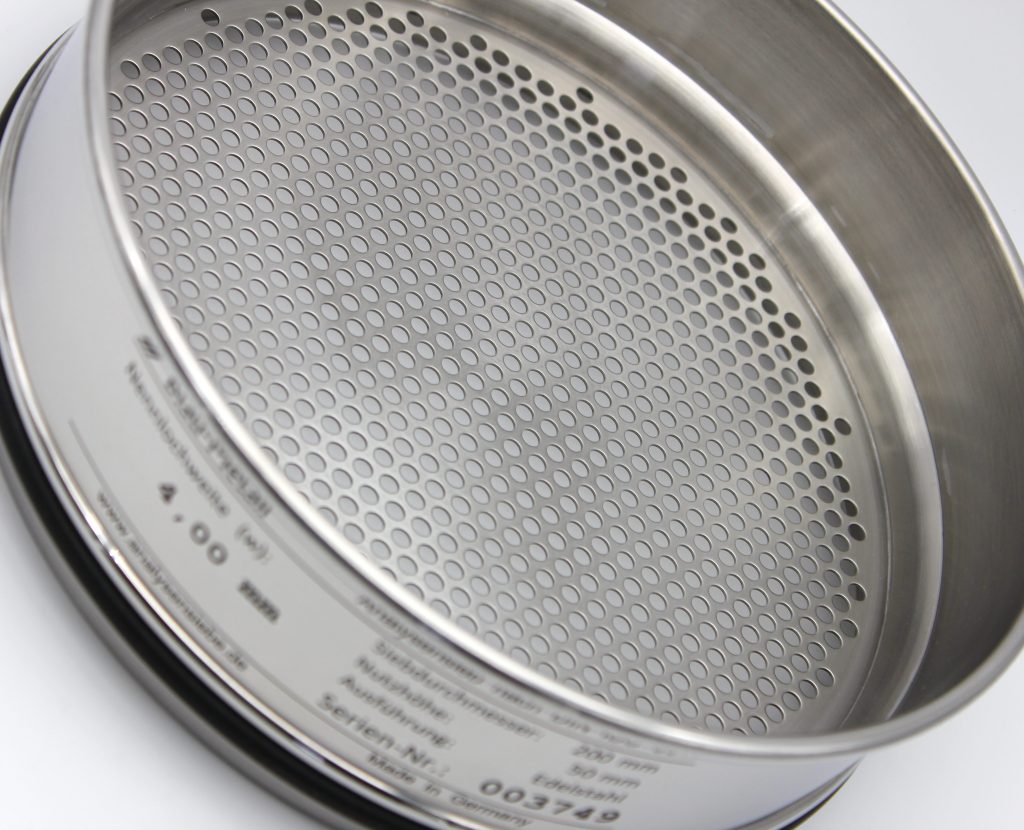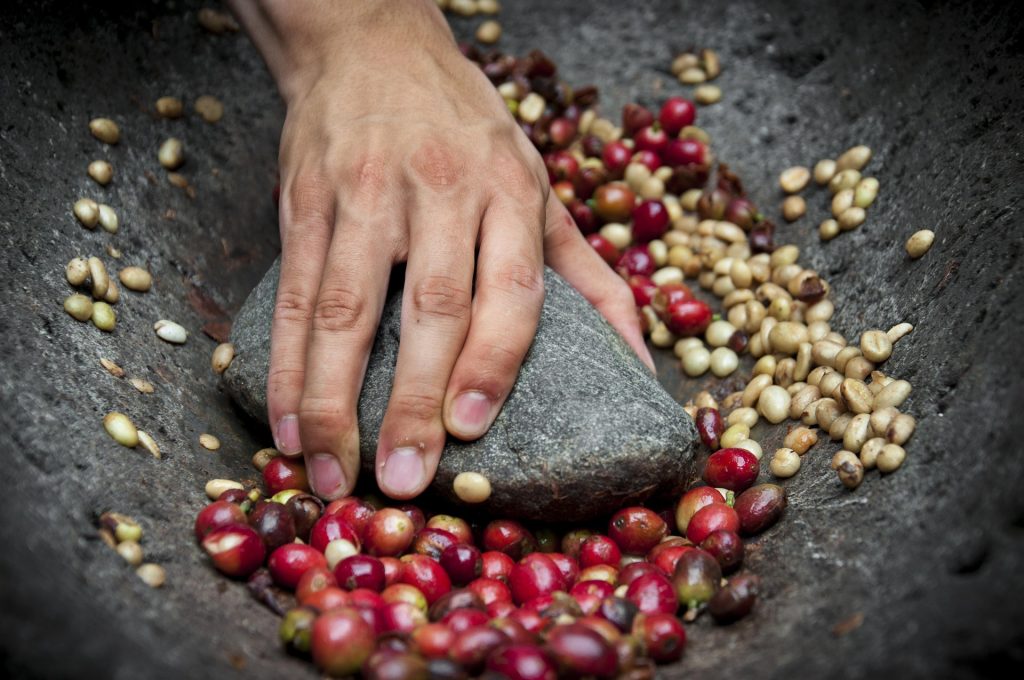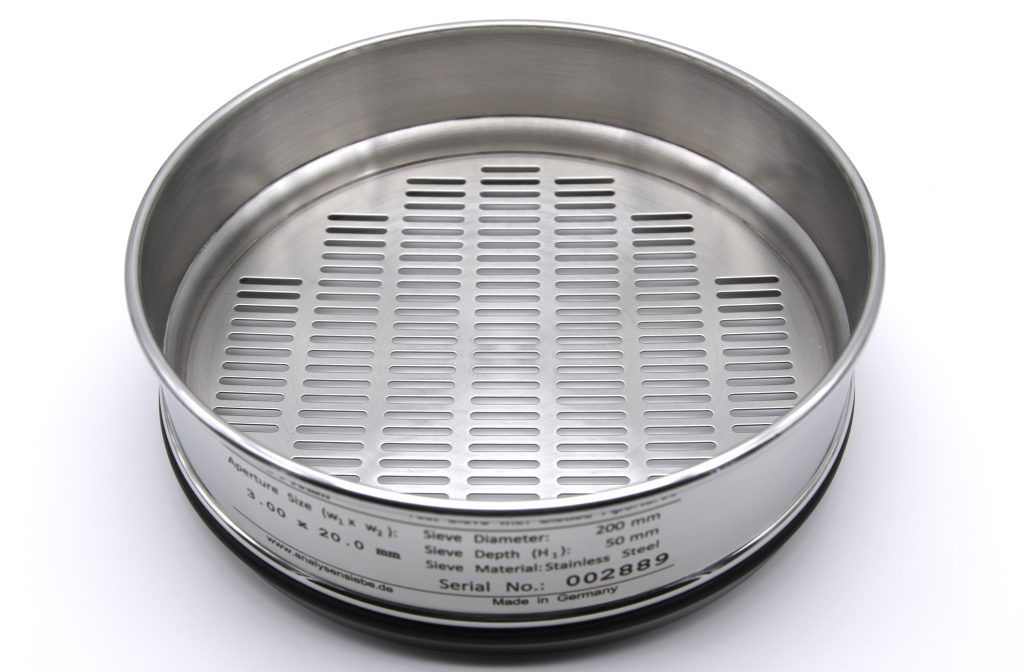 For centuries, coffee has been sought after across the globe as a high-value commodity and, to this day, remains a critical export good for numerous countries and enjoys a vibrant global market. As such, the quality assessment of coffee beans as a raw product and all varieties of ground coffees as trading goods is a critical element needed within the global marketplace.
For centuries, coffee has been sought after across the globe as a high-value commodity and, to this day, remains a critical export good for numerous countries and enjoys a vibrant global market. As such, the quality assessment of coffee beans as a raw product and all varieties of ground coffees as trading goods is a critical element needed within the global marketplace.
One particularly important aspect for coffee is the magnitude of value added as it moves from a raw commodity as coffee beans or green coffee, through the roasting and grinding process and ends on store shelves as a seemingly endless variety of coffee products. Across the value chain, gains in excess of a factor of 15 over the price of the raw product are no rarity. Therefore, much importance if paid within the coffee industry to the quality of the raw products used which is determined by a number of analytical methods.
 As with most raw commodities that exist in solid form, a major factor in assessing the quality of green coffee is the size distribution of the individual beans which drives the type of roasting process that is to be used which in turn determines the types of end product that can be manufactured. The size or size distribution of green coffee is a major price factor as larger beans are generally preferred which is also reflected in the names of the top-tier coffee beans: Superior, Supremo or simply AA.
As with most raw commodities that exist in solid form, a major factor in assessing the quality of green coffee is the size distribution of the individual beans which drives the type of roasting process that is to be used which in turn determines the types of end product that can be manufactured. The size or size distribution of green coffee is a major price factor as larger beans are generally preferred which is also reflected in the names of the top-tier coffee beans: Superior, Supremo or simply AA.
In addition to size, roasters pay particular attention to the distribution of bean sizes across a batch of green coffee – a narrow size distribution where most beans have the same size with very little variability allows for a uniform roast for the entire batch, allowing for fine control over the resulting flavor profile. Aside from bean size, other physical properties of the beans are also of importance including the density, moisture content and chemical make-up which are analyzed through different standardized method in order to assist in optimizing roasting profiles.
The size distribution of green coffee is typically determined by means of traditional sieving where beans are passed over a series of screens with descending aperture width top obtain the mass fractions retained by the individual sieves which can then be plotted into a distribution graph. New and emerging methods include optical measurements that can obtain the size distribution as well as other quality markers such as the color of the beans. However, most standards still mandate traditional sieving as the method of choice for assessing green coffee.
There are two primary standards that apply to the size analysis of green coffee:
- In South and North America, green coffee is typically assessed with a series of test sieves with round apertures that follow the 64th-inch series which is also used for cereals, pulses and other agricultural goods. The sieve openings differ by 1/64th inch from one sieve to the next, starting at 8/64-in. (3,175 mm) and running up to 20/64 in. (7,937 mm).
- Established in the early 1990s, ISO 4150 provides a standardized methodology for the size analysis of green coffee by manual or automatic sieving. As an international standard, ISO 4150 calls for the use of metric test sieves and specifies are combination of sieves with round and oblong apertures to be used, ranging from 2.80 to 8.00 mm.
Test Sieves in accordance with ISO 4150
 ISO 4150 defines the routine method for carrying out size analysis of green coffee by manual or automatic sieving using laboratory test sieves – defining the sieves to be used as well as special tolerance needs for them, outlining the sample preparation process, describing the sieving process itself with respect to sieving motion and time, and lastly providing a standard for how results shall be expressed in the test report. For the specifications of the sieves, ISO 4150 defers to ISO 3310-2 which defines the construction of test sieves with perforated plates, their tolerances and the required inspection processes needed for verifying the compliance with the tolerance values.
ISO 4150 defines the routine method for carrying out size analysis of green coffee by manual or automatic sieving using laboratory test sieves – defining the sieves to be used as well as special tolerance needs for them, outlining the sample preparation process, describing the sieving process itself with respect to sieving motion and time, and lastly providing a standard for how results shall be expressed in the test report. For the specifications of the sieves, ISO 4150 defers to ISO 3310-2 which defines the construction of test sieves with perforated plates, their tolerances and the required inspection processes needed for verifying the compliance with the tolerance values.
A total of eleven test sieves with round openings are specified in ISO 4150 – nine of which are among the standard R40-series sieve sizes as defined in ISO 3310-2 while the remaining two (6.00 & 7.50 mm) expand the conventional set to align the opening sizes with those of the 64th-inch series so that comparisons between the two different sieving methods are possible.
The most notable requirement for test sieves according to ISO 4150 are stricter tolerances for the sieve openings as those for traditional test sieves that comply with ISO 3310-2 or its U.S. equivalent ASTM E 323. This requirement for narrower tolerances arises from the tight spacing of opening sizes used as part of ISO 4150 where the step from one sieve to the next may be as small as 0.25 mm. With the typical tolerance values, this could lead to overlap between two adjacent sieves within the set which would lead to a poorly resolved or possibly completely useless distribution curve. To ensure any overlap between sieves can be ruled out, ISO 4150 reduces the traditional test sieve tolerances by around half.
Blau-Metall provides all round and oblong sieves included in ISO 4150 and in full compliance with the special tolerance requirements. Our test sieves use an all stainless-steel design, including the precision perforated plates, to enable a long lifetime of the sieves with minimal or no wear of the apertures over an extended period of time. Test Sieves according to ISO 4150 are fitted with a special, tamper-proof 3D laser engraving and undergo a full optical inspection prior to shipment. All sieves are delivered with a certificate of compliance; upon customer request, additional documentation such as calibration certificates can be provided.
ISO 4150 – Round Test Sieves
The table below provides a comparison between the typical test sieve standard ISO 3310-1, the reduced tolerance values of ISO 4150 and the current tolerances of Blau-Metall test sieves specifically furnished for the coffee industry. Similar tolerances are also used in test sieves for diamonds and precious stones.
| Aperture Diameter | U.S. Sieve No. |
Tolerance ISO 3310-2 |
Tolerance ISO 4150 |
Tolerance Blau-Metall |
|---|---|---|---|---|
| 2,80 mm | No. 7 | ± 0,11 mm | ± 0,05 mm | ± 0,03 mm |
| 4,00 mm | No. 10 | ± 0,13 mm | ± 0,06 mm | ± 0,02 mm |
| 4,75 mm | No. 12 | ± 0,14 mm | ± 0,07 mm | ± 0,03 mm |
| 5,00 mm | No. 12½ | ± 0,14 mm | ± 0,07 mm | ± 0,03 mm |
| 5,60 mm | No. 14 | ± 0,15 mm | ± 0,07 mm | ± 0,03 mm |
| 6,00 mm | No. 15 | ± 0,16 mm* | ± 0,08 mm | ± 0,03 mm |
| 6,30 mm | No. 16 | ± 0,17 mm | ± 0,08 mm | ± 0,04 mm |
| 6,70 mm | No. 17 | ± 0,17 mm | ± 0,08 mm | ± 0,05 mm |
| 7,10 mm | No. 18 | ± 0,18 mm | ± 0,09 mm | ± 0,05 mm |
| 7,50 mm | No. 19 | ± 0,19 mm* | ± 0,09 mm | ± 0,05 mm |
| 8,00 mm | No. 20 | ± 0,19 mm | ± 0,09 mm | ± 0,04 mm |
*The 6.00 and 7.50 mm opening sizes are not defined by ISO 3310-2 and tolerance values have been interpolated.
ISO 4150 – Oblong Test Sieves
 In addition to the conventionally used set of round-aperture test sieves, ISO 4150 specifies a set of seven test sieves with oblong openings for use in gradation analysis of Peaberry-Coffee as this particular type of coffee bean follows a different classification methodology.
In addition to the conventionally used set of round-aperture test sieves, ISO 4150 specifies a set of seven test sieves with oblong openings for use in gradation analysis of Peaberry-Coffee as this particular type of coffee bean follows a different classification methodology.
Peaberry-Coffee is the result of a natural genetic mutation of unknown mechanism that occurs in around 5-10% of coffee cherries and causes a coffee cherry to develop a single coffee bean instead of the usual two coffee beans. This provides the single bean with more space to grow and also allows it to grow into a mostly round shape – a stark contrast to the elongated coffee beans that make up the majority of beans harvested. Peaberry-Coffee is particularly sought after – not only because of its relative rarity – but also because the round shape of the beans makes a more uniform roast possible.
 Whether Peaberry-Coffee indeed offers a unique flavor compared with conventionally formed coffee beans is a point of debate among coffee enthusiasts and scientists. Nevertheless, as a markedly different type of commodity, Peaberry-Coffee requires a separate classification scheme when assessing the physical properties of the beans.
Whether Peaberry-Coffee indeed offers a unique flavor compared with conventionally formed coffee beans is a point of debate among coffee enthusiasts and scientists. Nevertheless, as a markedly different type of commodity, Peaberry-Coffee requires a separate classification scheme when assessing the physical properties of the beans.
For the seven test sieves with oblong apertures, ISO 4150 also utilizes the R40 Renard-Series to set the slot widths of the sieves which are primarily responsible for separating the size fractions. Apertures may be arranged in straight or staggered rows; apertures pitches are given as nominal values but are not compulsory; and Tolerances are only given for the slot widths and are mostly similar to those of ISO 5223 which governs oblong sieves for cereals.
With over 30 years of experience in the manufacture of test sieves with oblong openings, Blau-Metall can easily comply with the stringent tolerance requirements of ISO 4150.
| Aperture Size (w1 x w2) |
Tolerance (Δw1) |
Pitch (p1 x p2) |
U.S. Sieve No. |
Plate Thickness |
|---|---|---|---|---|
| 3,00 x 20,0 mm | ± 0,05 mm | 6,00 x 25,0 mm | No. 8 | 0,8-1,0 mm |
| 3,55 x 20,0 mm | ± 0,06 mm | 6,80 x 25,0 mm | No. 9 | 0,8-1,0 mm |
| 4,00 x 20,0 mm | ± 0,06 mm | 7,50 x 25,0 mm | No. 10 | 0,8-1,0 mm |
| 4,50 x 20,0 mm | ± 0,07 mm | 8,20 x 25,0 mm | No. 11 | 1,0 mm |
| 4,75 x 20,0 mm | ± 0,07 mm | 8,60 x 25,0 mm | No. 12 | 1,0 mm |
| 5,00 x 30,0 mm | ± 0,07 mm | 9,00 x 36,0 mm | No. 13 | 1,0 mm |
| 5,60 x 30,0 mm | ± 0,07 mm | 9,60 x 36,0 mm | No. 14 | 1,0 mm |
 German Website
German Website 